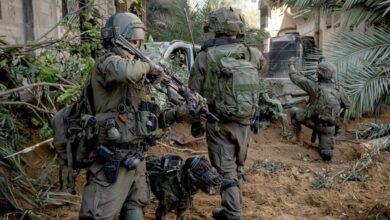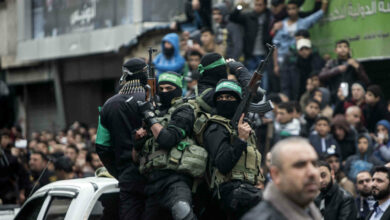Israeli Military Admits Two Civilian Deaths for Every Hamas Fighter in Gaza
Around two civilians have been killed for every dead Hamas fighter in the Gaza Strip, senior Israeli military officials admitted Monday, and said the army was deploying high-tech mapping software to try to reduce non-combatant deaths.
The Hamas-run health ministry in Gaza says Israel’s military campaign, in the wake of Hamas attacks on October 7, has killed around 15,900 people so far, most of them women and children.
Asked about media reports that 5,000 Hamas fighters had been killed, one of the senior officials told reporters at a briefing: “The numbers are more or less right.
“I’m not saying it’s not bad that we have a ratio of two to one,” one of the officials said, adding that the use of human shields was part of Hamas’s “core strategy.”
“Hopefully it (the ratio) will be much lower” in the coming phase of the war, they added, speaking on condition of anonymity.
The rising death toll and unfolding humanitarian crisis in Gaza have sparked outrage in much of the world.
Israel began bombarding targets in the Gaza Strip, alongside a ground invasion, with the aim of eradicating Hamas after its fighters carried out the worst attack in Israel’s history on October 7.
Hamas militants killed around 1,200 people and kidnapped about 240 others, according to Israeli officials.
‘Consequences of War’
Key ally the United States has cautioned Israel to do more to avert civilian casualties as operations shift to the south, where many Gazans are seeking refuge after fleeing the devastated north.
To that end, the officials said, the army is using high-tech mapping software to track population movements inside the Gaza Strip and issue evacuation orders.
The system incorporates mobile phone and other signals, aerial surveillance, and word from local sources, as well as AI, to maintain a constantly updating map showing population concentrations across the territory.
Each of the map’s 623 cells are color-coded, with green designating areas where at least 75 percent of the population has evacuated.
“In the south, because we have basically doubled the population, operations are much more precise,” the official said.
“We are taking much more time to make sure our efforts (at warning civilians) are effective.”
The map – which the military says is the product of eight years of research and development – is available to commanders and units on the ground.
The map is used to coordinate efforts to warn civilians to leave certain areas ahead of impending strikes via SMS, phone calls, leaflet drops and other announcements, and to track the effectiveness of such messaging in real time.
It is similar to one made available online that the military says is intended to enable Gazans to “evacuate from specific places for their safety if required.”
But the United Nations humanitarian office OCHA has questioned the usefulness of such a tool in an area where access to telecommunications and electricity is sporadic.
On Monday night, the main telecom company in the Gaza Strip said mobile telephone and internet service had been cut across the territory.
“I can assure you that we’re doing everything in our power to reduce civilian casualties,” the official said. “But this is part of the consequences of war.”












